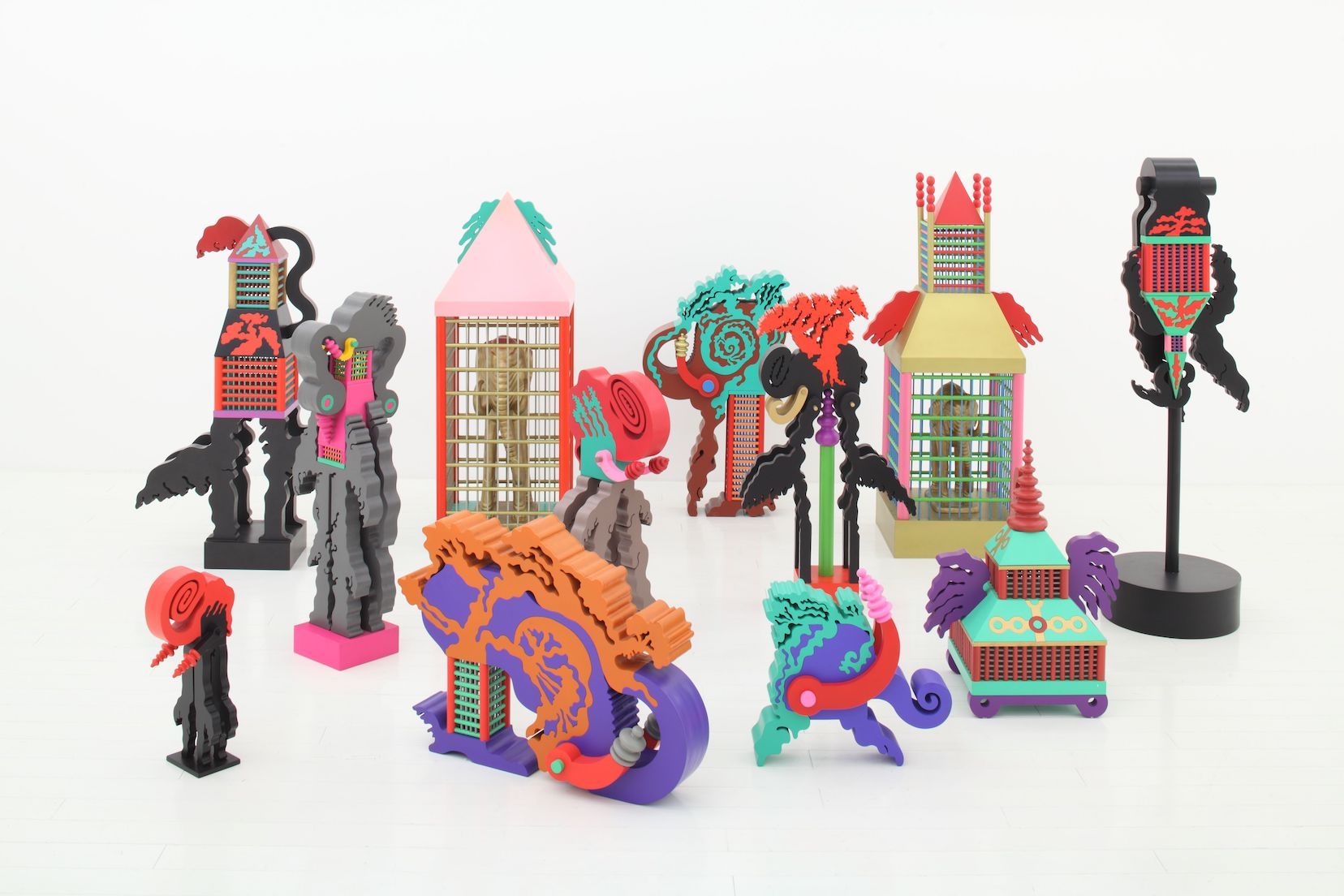Emperor of Pop KEIICHI TANAAMI’s Sculptures of Cranes, Elephants, High Heels, Phalluses, and Naked Women
A major figure in Japanese Pop art, KEIICHI TANAAMI was born in Tokyo in 1936, the eldest son of a textile wholesaler. When the Great Tokyo Air Raid ravaged the Japanese capital in 1945 Tanaami was nine years old, and he watched the firebombing from a shelter in his grandfather’s home, built below a tank of goldfish. “The whole sky went dark orange, then bombs fell,” the artist remembers. “The goldfish reflected that bright orange light. It was very bright and dazzling, very beautiful.” Much more than Speed Racer, Astro Boy, LSD, or sex appeal, it was the impact of war in Tanaami’s childhood that forms the basis of his imagination and work, which spans graphic design, illustration, animation, and sculpture.
NO MORE WAR is a series of wooden and paper sculptures Tanaami made during the late 1970s and 80s, a period marked by the artist’s critical health due to pulmonary edema, which often leads to respiratory failure. Although Tanaami admits that these works were made to provide his fans with something fun yet reasonably priced, they are also a complex mix of the artist’s dreams and memories. Based on a traditional Japanese children’s toy called Tatebanko, which are dioramas assembled from Ukiyo-e silkscreen prints, the sculptures combine forms of cranes, elephants, high heels, phalluses, and naked women with strange architectural moulds. Imbued with a sense of play and no clear endgame, Tanaami’s sculptures are like Pop Rorschach objects that treat sex, death, and architecture in equal measure.
